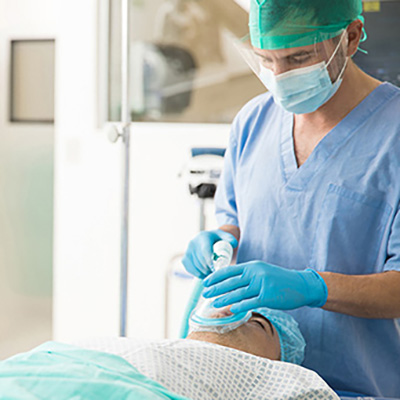These highly-trained anesthesiologists have a wide range of anesthetics and pain medications at their fingertips, in addition to state-of-the-art monitoring and anesthetic technology.
About
What is Anesthesia?
Anesthesia is the loss of feeling or awareness. Although there are many different types of anesthesia, not all types of anesthesia may be appropriate for you or for all surgeries; you will want to discuss this with your anesthesiologist.
At Cayuga Health, only highly qualified practitioners administer anesthesia.
- Our anesthesia providers work collaboratively with your surgeon to make sure that your experience is as safe and pain free as possible.
- There are many choices regarding the specific anesthesia to be used. This decision is made jointly by the patient and anesthesiologist with input from the surgeon, so that the anesthesia choice is appropriate for that person and the anesthetic plan addresses the patient’s concerns.
Important Patient Safety Information
Pain Management
Pain is real…and it affects each person differently. It is important you share your pain level with your nurse and doctor who are caring for you.

what our patients are saying
“I have to say the last couple visits that I’ve had here have been wonderful. About a month ago I had an EGD and the staff were amazing! Explained everything in detail and made me feel at ease. I was very nervous and the nurse I had was very comforting. Tonight we had to take my son to the emergency room and they were awesome with him! We got right in. “
“I have been a Hemo dialysis patient for almost Five years. Prior to dialysis and during dialysis I have had several trips to the ER, due to other health issues & was admitted to CMC more than a few times. Each and every time I’ve been there, whether in patient or out, I have been treated with respect, professionalism, and efficiency. I give this hospital 2 thumbs up!! Thank you CMC for taking care of me all these years!!”
“I have had many occasions visiting CMC for myself and family. We have never had a bad experience there at all. Last October I had surgery and the nurses were amazing especially my night nurse. Thank you to all CMC staff for doing what you do every day with a smile.”
“The staff and accommodations at Cayuga Birthplace are amazing!!! This is what it I imagine it would feel like to be a celebrity getting VIP treatment. I wish I could stay longer – even the food options are 5 Star! The amenities are great. Everything is clean and designed beautifully. Not a single complaint, only praises!”

